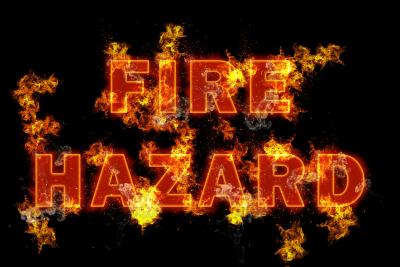A recent Guardian headline referred to the welcome news that the government has given councils the power to strip dangerous cladding off privately owned high-rise buildings and reclaim the multimillion-pound cost from the landlords. The news was wrapped up in the announcement of the government’s ban on the use of combustible materials on new high-rise homes. The statement says:
Local authorities will get the government’s full backing, including financial support if necessary, to enable them to carry out emergency work on affected private residential buildings with unsafe ACM cladding. They will recover the costs from building owners. This will allow buildings to be made permanently safe without delay.
Behind the scenes there are hopefully plans afoot as to how to make this happen, but the only details behind this that I have found to date appear to be in an amendment to the operating guidance on the Housing Health and Safety Rating System. This is an important document. It makes it absolutely clear that local authorities have powers under the Housing Act 2004 to assess the outside of buildings for fire hazards. Although, by itself, it does not compel inspection, or action, it is part of a bigger regulatory framework under which local authorities have duties to inspect if they have reason to consider it would be appropriate to see if there are any category 1 or category 2 hazards.

As there is now a (non-public) list of buildings constructed with combustible ACM cladding systems, and presumably this data is known to local authorities with such blocks, this should be reason enough to trigger the duty to inspect. If a category 1 hazard is found, then there is a duty to take appropriate enforcement action. The annex to the amendment document gives some rather depressing statistics about the number of fires that there are annually in dwellings (about 1 in every 861 dwellings had an accidental fire attended by the Fire and Rescue Service in 2017/18). Over a 3-year period there was an annual average of 356 non-fatal casualties in purpose-built blocks of flats over 3 storeys, and 14 fatalities.
What is not clear from the government statement is what ‘financial support’ means, how the local authorities would carry out emergency work, who the ‘building owners’ are, and from whom they will recover the costs. ‘Building owners’ is apparently intended to refer to freeholders. As Martin Boyd has pointed out, ownership with blocks of flats is complex: in some cases there are developers and freeholders with deep pockets, but not always, and how can resident-owned freeholders raise the money for this kind of work? The government has often called for those responsible in the private sector to ‘do the right thing’ and not pass the cost on to leaseholders, but it is not clear why all freeholders, particularly if not the developer or original owner, should have to pay. After all, we are talking about a problem caused by a systemic failure in fire safety regulation and construction methods and standards. As Steve Reed, Labour MP, has said: ‘This looks worryingly like an attempt by the government to pass the buck for their own failures onto cash-strapped councils knowing they won’t be in a position to act.’ In the meantime, there is the urgent problem of getting these buildings made safe. So the recent announcement sounds like a step in the right direction.

Turning to the document itself, in an earlier blog we referred to the powers that local authorities have under the Housing Act 2004 to take action where there is a ‘Housing Health and Safety Hazard’. We stated that although this can include getting cladding replaced, in practice local authorities have taken a subordinate role to Fire and Rescue Authorities and consequently they have not acted. In a later blog I suggested a further reason for inaction by local authorities was that they (then) gave insufficient weight to health and safety issues and viewed interim measures, such as evacuation policies and waking watch, as sufficient to protect against risk to life.
The amended guidance makes a number of important points. It confirms (and some had doubted this) that the Housing Act 2004 applies to the common parts, not just to individual dwellings, and this includes both the exterior (including cladding) and internal common parts (hallways, stairwells etc.). Further, it may be necessary also to inspect private areas such as balconies and terraces given that they may contribute to fire spread. The guidance also points out that inspection of the common parts may reveal potential problems within dwellings and therefore it may also be necessary to inspect some flats. Sadly, it is the case that following Grenfell a large range of other fire safety deficiencies have come to light. Under protocols, the local authority should consult with the Fire and Rescue Authority before taking action, unless there is a great urgency.
The guidance also makes clear that interim measures do NOT form part of the hazard assessment, although they may influence the action that the local authority takes (e.g. whether it serves a prohibition notice, an improvement notice etc.). There is some technical discussion of ACM and its use with various fillers and cores but it also reiterates earlier advice to building owners that ‘the clearest way to ensure the safety of residents is to remove all ACM, including small or partial areas of ACM, and replace it with a safe material. This remains the most appropriate remediation solution’. Although the focus in this document is on ACM, it must not be forgotten that there are other types of cladding that are also unsafe, as mentioned in the Guardian recently and highlighted in a recent blog by Andrew Chapman.
As well as looking at construction and any alterations, the amended guidance also explains that there have to be clear instructions on what to do in the case of fire and that it may be that the inspector should speak to residents. Indeed. One of the many shocking facts to emerge following Grenfell is how little engagement there is between building managers and residents. Residents in many sites report continuing confusion over what to do if there is a fire, and even whether there is a stay-put or evacuate policy.

Residents in high-rise buildings need to be consulted with on safety matters
Shared under the CC BY-SA 3.0 licence. Originally appears on: http://alphastockimages.com/
Overall, the government’s position is promising. Brokenshire appears to be pushing things along. But there remain important details that need to be fleshed out, particularly in relation to funding. It may be that the government needs to supply the money that austerity-hit local authorities simply do not have; even if this is on a long-term loan basis. Also, the story to date of involvement from local authorities is not promising. These are not new powers; councils already had the ability to take action but they have not done so. Just as with their powers to tackle rogue landlords where some councils have stood out from the crowd in trying to hold bad landlords to account, most have not done so. So the question remains: will local authorities have the political appetite and resources to ensure that the combustible cladding is replaced and buildings are made safe? Eighteen months on from Grenfell, and with thousands still living in unsafe conditions, we need more action.
__________
How to cite this blog post (Harvard style)
Bright, S. (2018). Local Authorities Have Teeth. Available at: https://www.law.ox.ac.uk/housing-after-grenfell/blog/2018/12/local-authorities-have-teeth (Accessed [date]).
Share:
